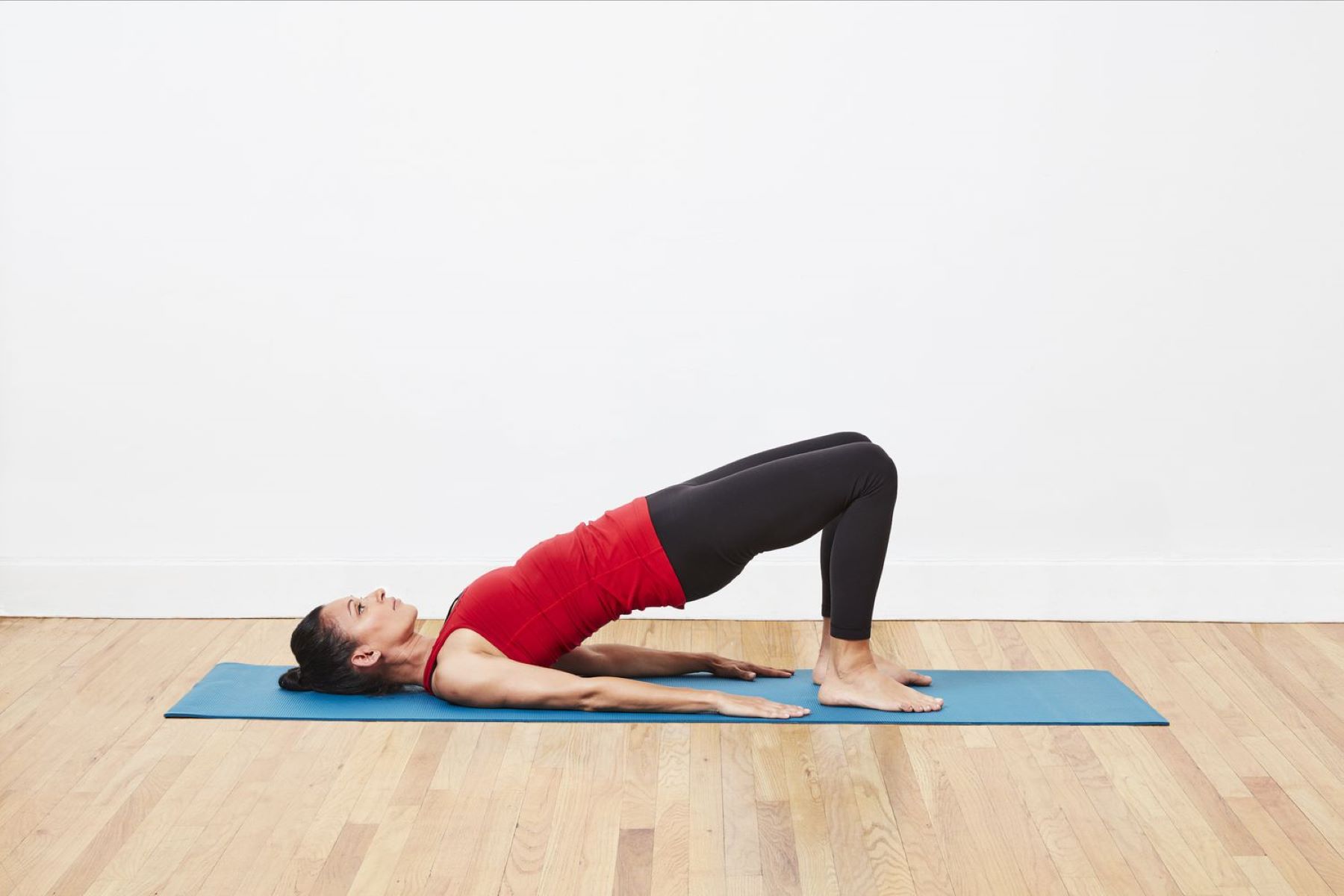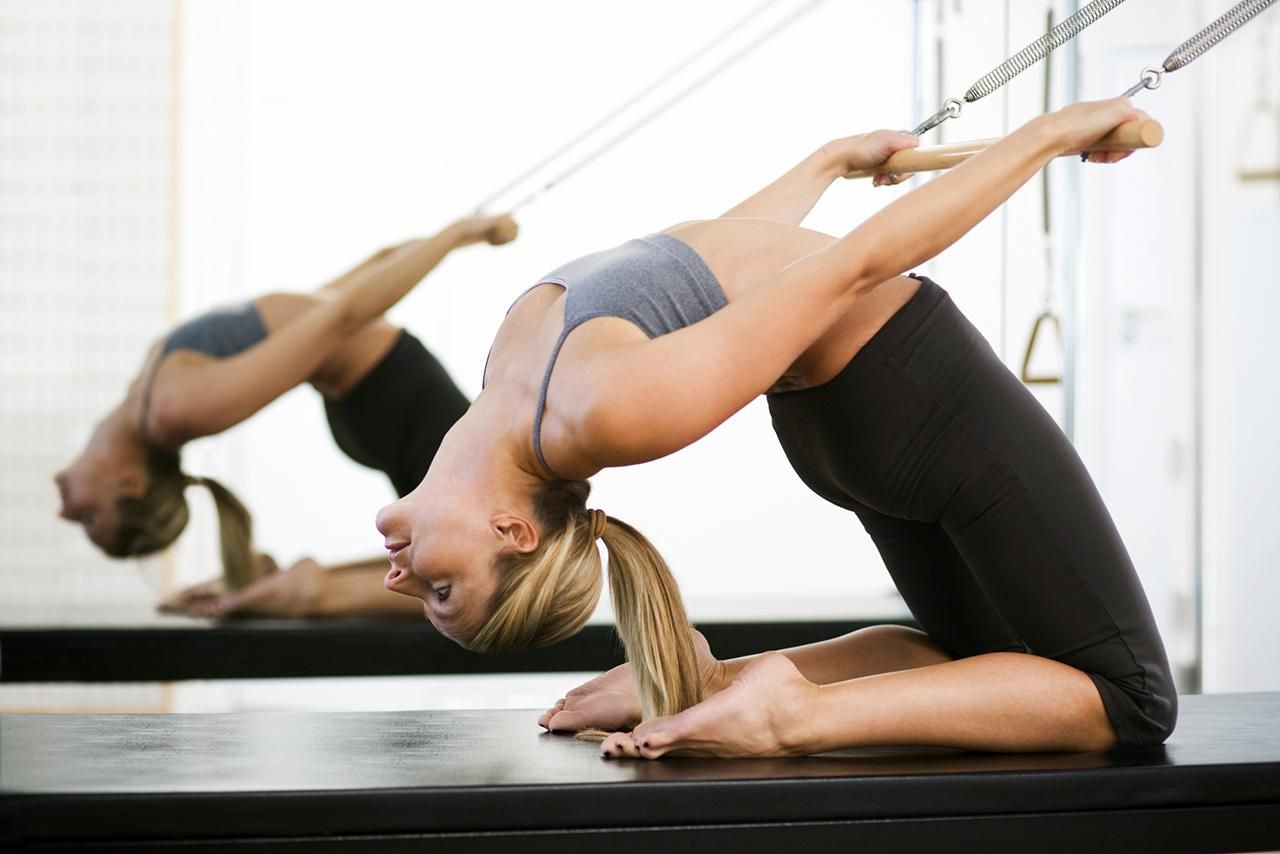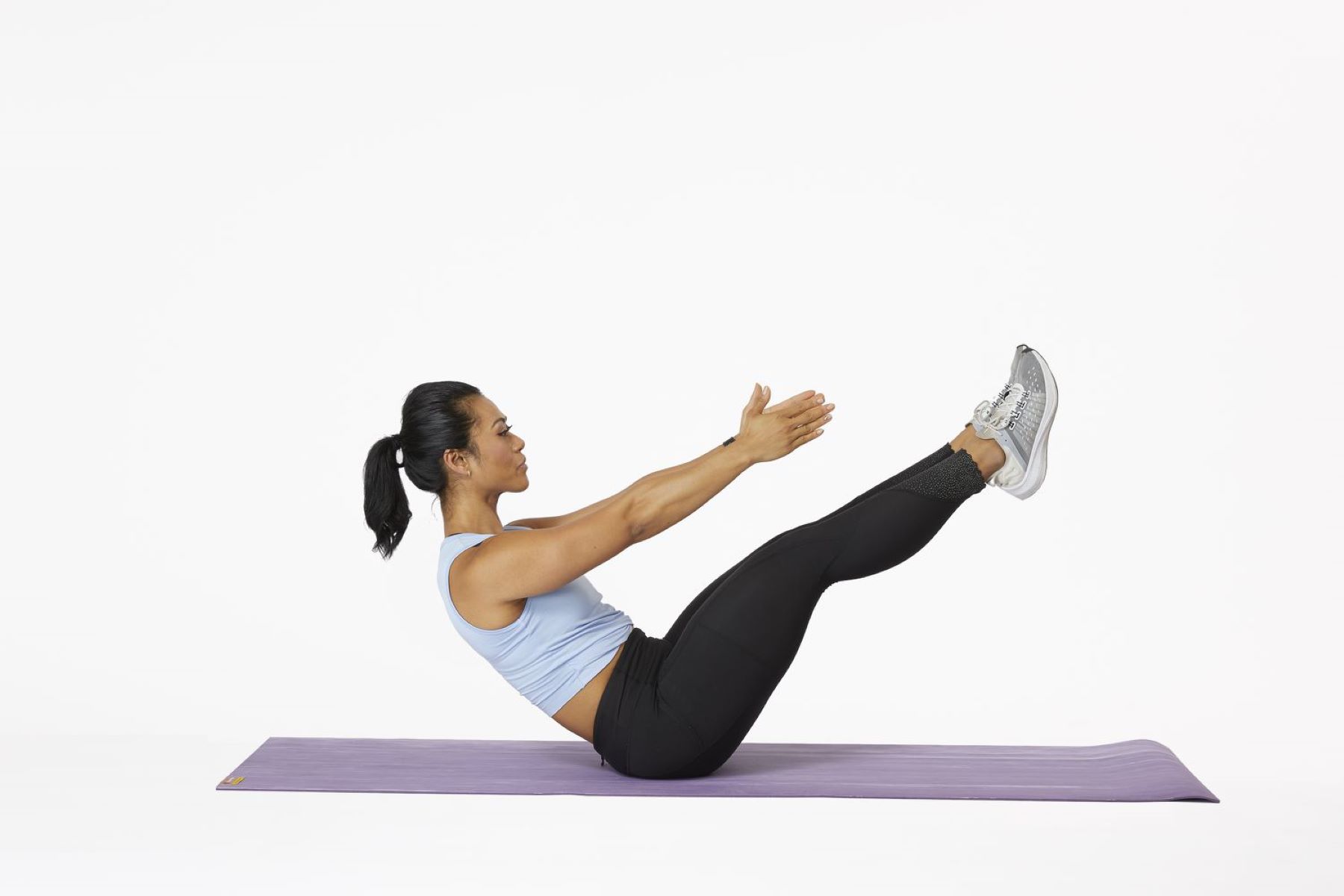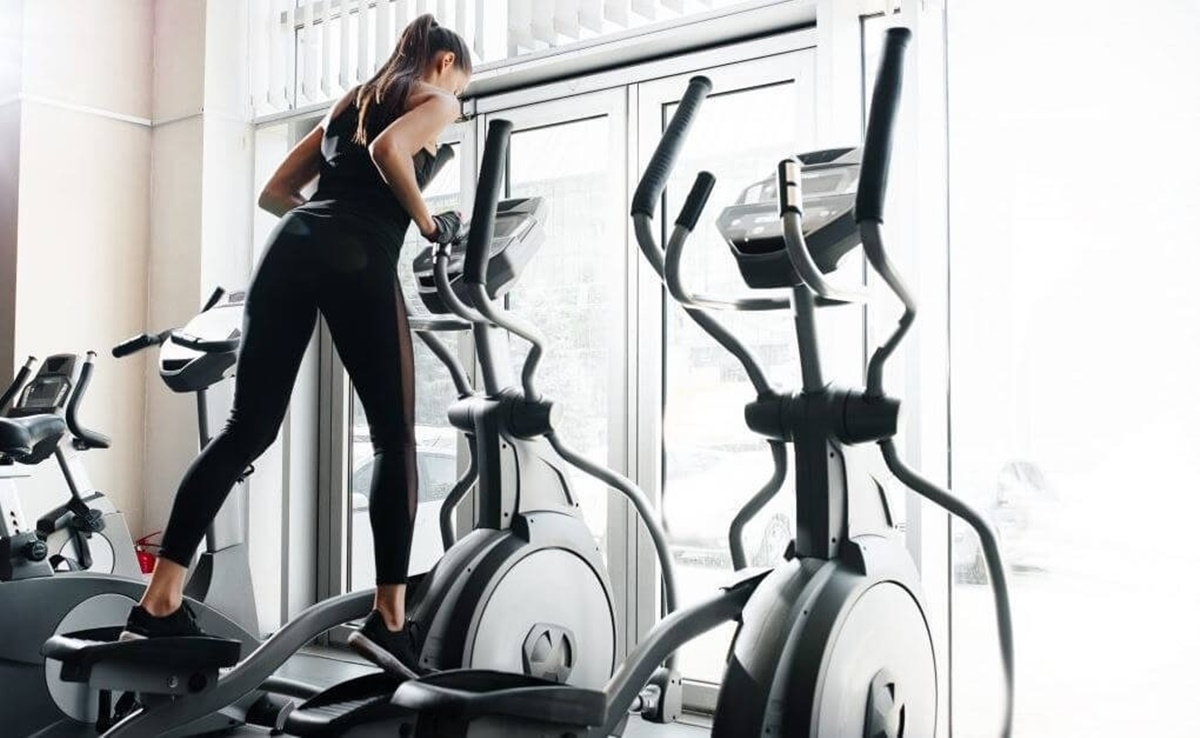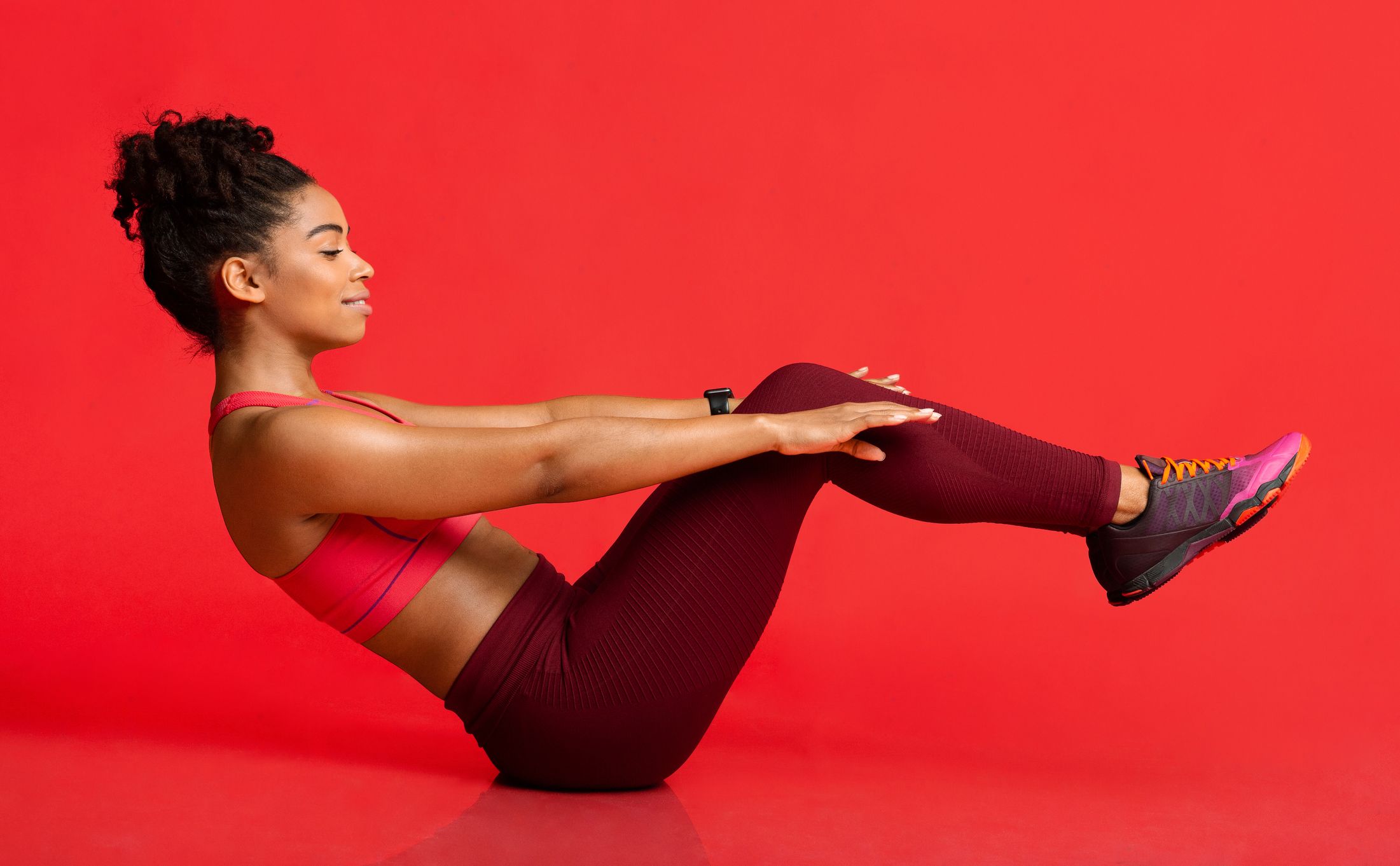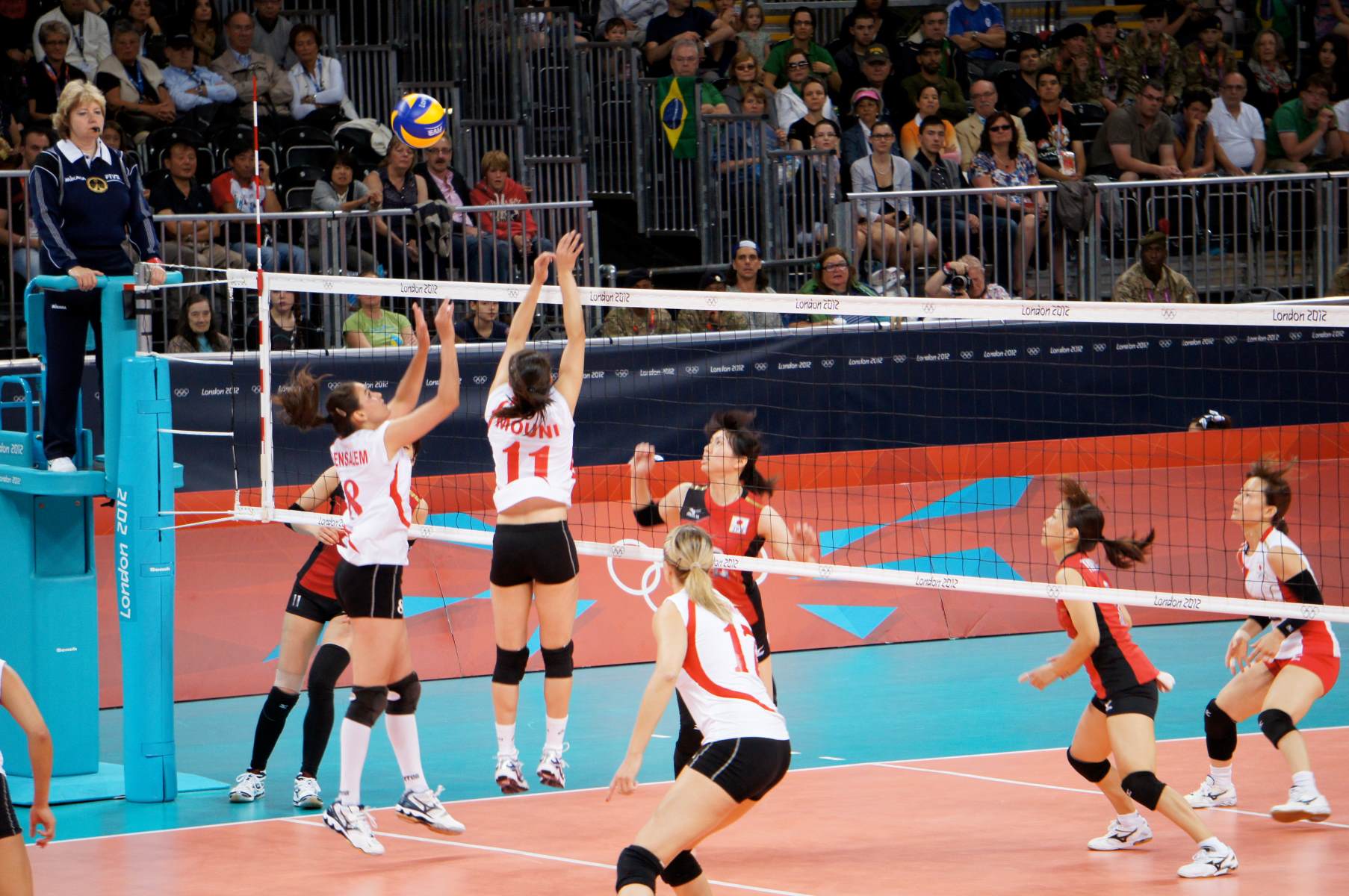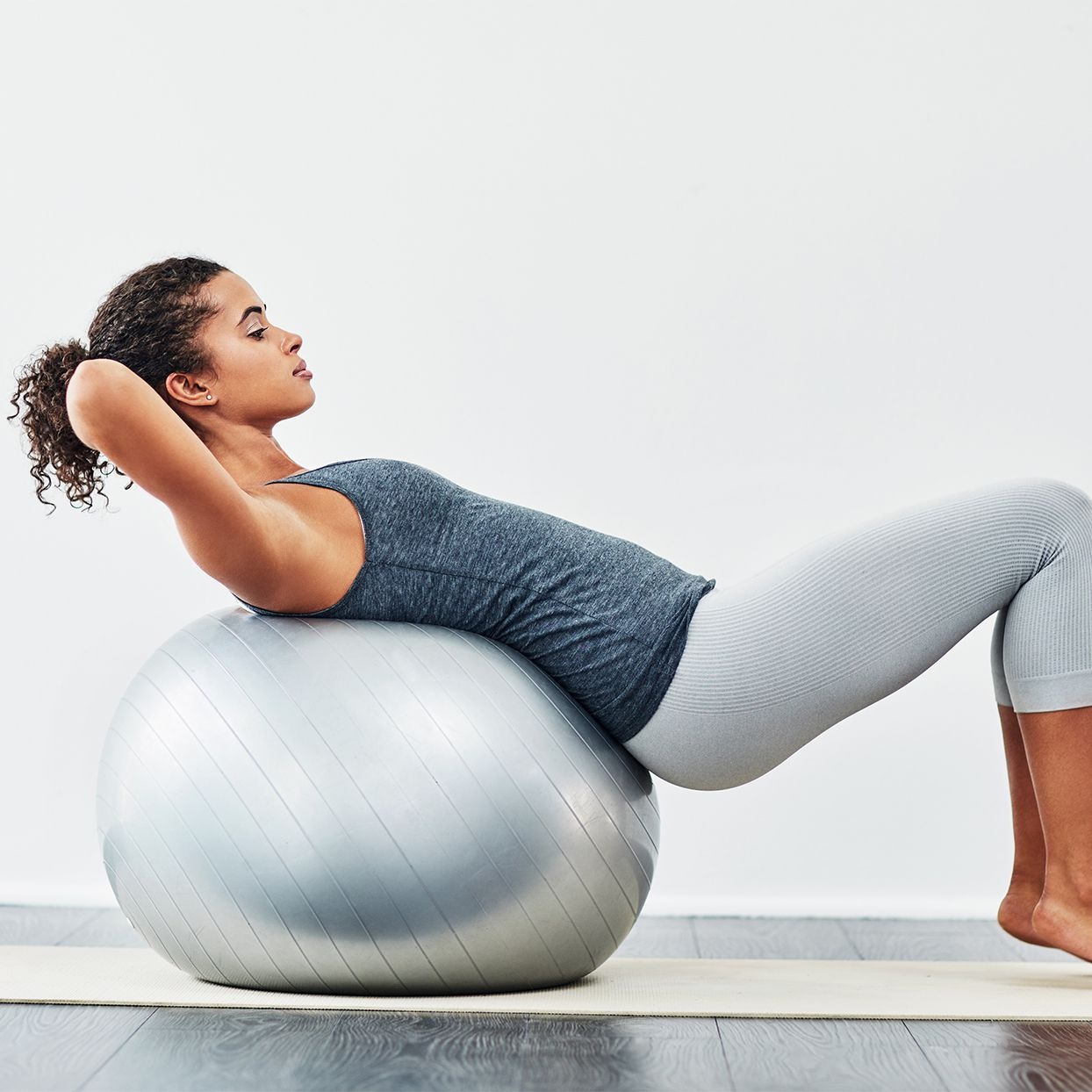

Featured
How To Use An Exercise Ball
Published: September 28, 2023
Discover how to use an exercise ball to elevate your workouts and achieve your fitness goals. Featured exercises and tips for maximizing results.
Introduction
Exercise balls, also known as stability balls or Swiss balls, have gained immense popularity in the fitness world for their versatility and effectiveness. These large, inflatable balls offer a unique and engaging way to strengthen muscles, improve balance, and enhance flexibility. Whether you’re a beginner or a seasoned fitness enthusiast, incorporating an exercise ball into your workout routine can take your fitness journey to the next level.
The beauty of an exercise ball lies in its ability to engage multiple muscle groups simultaneously, making it a valuable tool for full-body workouts. From core strengthening exercises to upper and lower body workouts, as well as stretching and flexibility exercises, the exercise ball can serve as a versatile piece of equipment for individuals of all fitness levels.
The benefits of using an exercise ball extend beyond physical fitness. Working out with an exercise ball can improve posture, promote proper spinal alignment, and alleviate back pain. Additionally, it can provide a fun and dynamic element to your fitness routine, keeping you motivated and engaged.
Before diving into the various exercises you can do with an exercise ball, it’s important to select the right ball for your needs. A properly sized exercise ball will ensure safety and effectiveness throughout your workouts. In the next section, we will explore how to choose the right exercise ball.
Benefits of Using an Exercise Ball
Incorporating an exercise ball into your fitness routine offers a myriad of benefits for your overall health and well-being. Here are some key advantages of using an exercise ball:
- Enhances Core Strength: One of the primary benefits of exercising with an exercise ball is its ability to target and strengthen the core muscles. When performing exercises on an unstable surface, such as an exercise ball, your core muscles are constantly engaged to maintain balance and stability.
- Improves Posture: Regular use of an exercise ball can help improve your posture by strengthening the muscles that support proper spinal alignment. Sitting on an exercise ball instead of a chair can encourage good posture and reduce the strain on your back.
- Increases Flexibility: Many exercises performed on an exercise ball involve stretching and elongating muscles, promoting improved flexibility. The ball offers a wide range of motion, allowing you to perform various stretching exercises that target different muscle groups.
- Enhances Balance and Stability: When performing exercises on an exercise ball, your body is constantly working to stabilize itself. This improves your balance and proprioception (awareness of your body’s position in space), leading to improved stability and coordination.
- Targets Multiple Muscle Groups: An exercise ball is a versatile tool that can engage multiple muscle groups simultaneously. While performing exercises, you’ll not only be targeting your core muscles but also engaging muscles in your arms, legs, glutes, and back.
These benefits make the exercise ball a valuable addition to any fitness routine. Next, let’s explore how to choose the right exercise ball to ensure safety and effectiveness.
Choosing the Right Exercise Ball
Choosing the right exercise ball is crucial to ensure safe and effective workouts. Here are some factors to consider when selecting an exercise ball:
- Size: Exercise balls come in various sizes, so it’s important to choose one that suits your height and weight. A general guideline is to select a ball that allows your knees to be at a 90-degree angle when sitting on it. Consult a size chart or try different sizes to find the one that fits you best.
- Material: Exercise balls are typically made of either PVC or rubber. PVC balls are more affordable, while rubber balls are more durable and have a higher weight capacity. Consider your budget and intended use when deciding between the two materials.
- Weight Capacity: Check the weight capacity of the exercise ball to ensure it can support your weight during workouts. Most balls have weight limits ranging from 250 to 500 pounds.
- Texture: Look for an exercise ball with a non-slip or textured surface. This provides better grip and stability, reducing the risk of slipping or sliding during exercises.
- Inflation: Make sure the exercise ball comes with an inflation pump or has an easily accessible valve for inflation. Proper inflation is essential for maintaining the ball’s stability and integrity during workouts.
Once you’ve chosen the right exercise ball, it’s important to properly inflate and set it up before use. Pay attention to the manufacturer’s instructions regarding inflation pressure and avoid over-inflating the ball, as it may affect its stability.
With your exercise ball properly selected and set up, you’re ready to embark on a journey towards improved fitness and well-being. In the following sections, we will explore various exercises that you can do with an exercise ball to target different muscle groups.
Proper Inflation and Setup
Properly inflating and setting up your exercise ball is essential to ensure its stability and effectiveness during your workouts. Here are some steps to follow for proper inflation and setup:
- Check the manufacturer’s guidelines: Before inflating the exercise ball, refer to the manufacturer’s instructions and guidelines. They may provide specific recommendations for the inflation process and optimal pressure levels.
- Choose the right pump: Use the appropriate pump that comes with the exercise ball or a pump that is compatible with it. Avoid using high-pressure pumps, as they can overinflate the ball and cause it to burst.
- Inflate the ball: Attach the pump nozzle to the valve on the exercise ball and begin inflating it. Inflate the ball gradually, periodically checking its size by sitting on it with your knees at a 90-degree angle. Avoid overinflating the ball, as it can compromise its stability.
- Check the firmness: Once the ball is inflated, check its firmness by sitting on it. You should sink slightly into the ball, with your hips and knees at a comfortable angle. If the ball is too firm or too soft, adjust the inflation accordingly.
- Secure the valve: After inflating the ball to the desired firmness, secure the valve tightly to prevent air leakage during your workouts. Some exercise balls come with a plug or cap to cover the valve for added security.
- Choose a suitable workout area: Select a clean, flat, and spacious area to place your exercise ball. Make sure there are no sharp objects or rough surfaces that may puncture or damage the ball.
- Clear the surrounding space: Remove any furniture or obstacles that may obstruct your movements while using the exercise ball. This will provide ample space for a safe and comfortable workout.
By following these steps, you can ensure that your exercise ball is properly inflated and set up for optimal stability and safety. Now that your exercise ball is ready to go, let’s dive into various exercises that you can perform to target different muscle groups.
Core Strengthening Exercises with an Exercise Ball
An exercise ball is an excellent tool for targeting and strengthening the core muscles, including the abdominals, obliques, and lower back. Here are some effective core strengthening exercises you can perform with an exercise ball:
- Ball Crunches: Sit on the exercise ball with your feet flat on the floor and walk your feet forward as you lean back, allowing the ball to support your lower back. Cross your arms over your chest and contract your abs as you perform a traditional crunch, lifting your upper body toward the ceiling. Slowly lower yourself back to the starting position. Repeat for a set number of repetitions.
- Plank with Ball Roll-In: Assume a push-up position with your hands on the ground and your shins resting on the exercise ball. Engage your core and roll the ball towards your chest by bending your knees. Extend your legs back to the starting position, maintaining a straight line from your head to your heels. Repeat for a set number of repetitions.
- Side Crunches: Sit sideways on the exercise ball, with one hip resting on the ball and your legs extended out to the side. Place your hands behind your head and lean your upper body towards the ball, contracting your oblique muscles. Return to the starting position and repeat on the other side. Perform a set number of repetitions on each side.
- Ball Pike: Start in a push-up position with your shins resting on the exercise ball. Engage your core and lift your hips upward, rolling the ball towards your chest. Hold the piked position for a moment, then slowly roll the ball back to the starting position. Repeat for a set number of repetitions.
- Reverse Back Extension: Lie face down on the exercise ball with your hips resting on the ball and your feet anchored against a wall or sturdy surface. Place your hands behind your head or extend them out in front of you for balance. Engage your lower back muscles and lift your upper body until it is parallel to the floor. Lower back down to the starting position and repeat for a set number of repetitions.
These core strengthening exercises target the deep muscles of your core, helping to improve stability, posture, and overall strength. Incorporate these exercises into your workout routine, gradually increasing the intensity and repetitions as your core muscles become stronger.
Next, let’s explore upper body exercises that can be performed with an exercise ball to further enhance your fitness journey.
Upper Body Exercises with an Exercise Ball
An exercise ball is not just limited to core exercises. It can also be utilized to target and strengthen your upper body muscles, including the arms, shoulders, and chest. Here are some effective upper body exercises you can perform with an exercise ball:
- Push-Ups with Feet on Ball: Assume a push-up position with your feet resting on the exercise ball and your hands shoulder-width apart on the ground. Lower your chest towards the ground while keeping your core engaged. Push yourself back up to the starting position, using your arms and chest muscles. Repeat for a set number of repetitions.
- Triceps Dips on Ball: Sit on the edge of the exercise ball with your feet flat on the ground, shoulder-width apart. Place your hands beside your hips on the ball, fingers pointing forward. Slide your hips off the ball, keeping your knees bent at a 90-degree angle. Bend your elbows and lower your body towards the ground, then push back up to the starting position. Repeat for a set number of repetitions.
- Shoulder Press: Sit on the exercise ball with dumbbells in your hands, held at shoulder level and palms facing forward. Push the dumbbells overhead, fully extending your arms. Lower the dumbbells back down to shoulder level and repeat for a set number of repetitions. This exercise targets the shoulder muscles.
- Chest Press: Lie on your back with the exercise ball positioned between your shoulder blades and your feet flat on the ground. Hold dumbbells in each hand and extend your arms directly above your chest. Slowly lower the dumbbells towards the sides of your chest, keeping your elbows at a 90-degree angle. Press the dumbbells back up to the starting position and repeat for a set number of repetitions. This exercise targets the chest muscles.
- Bicep Curls: Sit on the exercise ball with your feet flat on the ground and dumbbells in your hands, palms facing forward. Keep your back straight and lift the dumbbells towards your shoulders, bending at the elbows. Slowly lower the dumbbells back down to the starting position and repeat for a set number of repetitions. This exercise targets the bicep muscles.
These upper body exercises provide a challenging and effective workout for your arms, shoulders, and chest. Incorporate them into your routine for a well-rounded upper body strengthening program.
Now, let’s explore lower body exercises that can be performed with an exercise ball to further enhance your overall fitness regimen.
Lower Body Exercises with an Exercise Ball
An exercise ball can be a valuable tool for targeting and strengthening the lower body muscles, including the legs, glutes, and hamstrings. Incorporating lower body exercises with an exercise ball can help improve balance, stability, and overall lower body strength. Here are some effective exercises you can perform:
- Squats: Stand with your feet shoulder-width apart and place the exercise ball between your lower back and a wall. Engage your core and lower your body into a squatting position, as if sitting back onto an imaginary chair. Make sure your knees do not extend past your toes. Push through your heels to return to the starting position and repeat for a set number of repetitions.
- Lunges with Ball Pass: Stand with your feet hip-width apart and hold the exercise ball in front of you at chest level. Take a step forward with your right leg into a lunge position, keeping your knee at a 90-degree angle. As you lunge, pass the exercise ball under your right thigh to your left hand. Step back to the starting position and repeat on the other side. Alternate sides and repeat for a set number of repetitions.
- Hamstring Curls: Lie on your back with the exercise ball positioned under your heels. Lift your hips off the ground, keeping your back and shoulders on the floor. Bend your knees and roll the ball towards your glutes, engaging your hamstring muscles. Extend your legs back to the starting position and repeat for a set number of repetitions.
- Glute Bridge: Lie on your back with your feet resting on the exercise ball and arms relaxed by your sides. Engage your glutes and lift your hips off the ground until your body forms a straight line from your knees to your shoulders. Hold for a few seconds, then slowly lower your hips back down to the starting position. Repeat for a set number of repetitions.
- Inner Thigh Squeeze: Sit on the exercise ball with your feet flat on the ground and knees bent at a 90-degree angle. Place a small exercise ball or soft object between your knees. Squeeze your knees together, engaging your inner thigh muscles, and hold for a few seconds before releasing. Repeat for a set number of repetitions.
These lower body exercises target the major muscle groups of the legs and glutes, promoting strength, stability, and improved lower body functionality. Incorporate these exercises into your workout routine to enhance your lower body strength and fitness.
Next, let’s explore stretching and flexibility exercises that can be performed with an exercise ball.
Stretching and Flexibility Exercises with an Exercise Ball
An exercise ball can be a valuable tool for improving flexibility and increasing range of motion. Incorporating stretching exercises with an exercise ball can help alleviate muscle tension, improve joint mobility, and enhance overall flexibility. Here are some effective stretching and flexibility exercises you can perform with an exercise ball:
- Back Extension Stretch: Lie face down on the exercise ball with your hips resting on the ball and your feet anchored against a wall or sturdy surface. Place your hands behind your head or extend them out in front of you for balance. Relax your back and allow your spine to extend over the ball, feeling a gentle stretch in your lower back. Hold this stretch for 15-30 seconds.
- Pec Stretch: Stand facing the exercise ball and place your arms in a “W” shape, with your elbows bent and your forearms resting on the ball. Walk forward, allowing the ball to roll down your forearms, stretching your chest muscles. Hold this stretch for 15-30 seconds.
- Hamstring Stretch: Sit on the exercise ball with your legs extended in front of you. Place one heel on top of the ball and flex your foot. Slowly roll the ball away from you, allowing your leg to straighten and feeling a stretch in your hamstring. Hold this stretch for 15-30 seconds and then repeat with the other leg.
- Quadriceps Stretch: Lie face down on the exercise ball with your hands on the floor for support. Bend one knee and bring your foot towards your glutes, resting it on the ball. Gently press your foot into the ball, feeling a stretch in the front of your thigh. Hold this stretch for 15-30 seconds and then switch legs.
- Hip Flexor Stretch: Kneel on the floor with your back to the exercise ball. Place one foot on top of the ball, with your knee bent at a 90-degree angle. Gently lean back, allowing the ball to roll away from you, until you feel a stretch in the front of your hip. Hold this stretch for 15-30 seconds and then repeat with the other leg.
These stretching and flexibility exercises can help improve joint mobility, relieve muscle tightness, and increase overall flexibility. Incorporate these exercises into your workout routine or as a standalone stretching session to enhance your flexibility and maintain optimal muscle health.
Finally, let’s explore some tips for using an exercise ball safely to prevent injuries and ensure a successful workout experience.
Tips for Using an Exercise Ball Safely
While exercise balls can be a fun and effective fitness tool, it’s important to use them safely to prevent injuries and ensure a successful workout experience. Here are some tips to keep in mind when using an exercise ball:
- Choose the right size: Select an exercise ball that is appropriate for your height and weight. Using a ball that is too small or too big can compromise your stability and increase the risk of injury.
- Start with basic exercises: If you’re new to using an exercise ball, begin with basic exercises and gradually progress to more advanced movements. This allows your body to adapt and build strength before attempting challenging exercises.
- Maintain proper form: Pay attention to your posture and form during exercises. Engage your core muscles to stabilize your body and avoid overextending or straining your joints. Proper form ensures effective results and minimizes the risk of injury.
- Use controlled movements: Perform exercises with controlled and smooth movements. Avoid jerking or bouncing on the ball, as this can lead to instability and potential accidents.
- Use additional support if needed: If you’re just starting out or have concerns about balance, it’s okay to use additional support. Place the exercise ball near a wall or sturdy surface that you can hold onto for stability until you feel more confident.
- Have a clear workout space: Ensure that you have enough space to perform exercises comfortably without any obstructions. Remove objects or furniture that may pose a risk during your workout.
- Check the ball regularly: Inspect the exercise ball for any signs of damage or wear before each use. Check for punctures, leaks, or cracks that could compromise its stability. If you notice any damage, replace the ball immediately.
- Listen to your body: Pay attention to how your body feels during and after using the exercise ball. If you experience any pain, discomfort, or dizziness, stop exercising and consult a healthcare professional if necessary.
- Stay hydrated: Remember to stay hydrated during your workouts by drinking water regularly. Hydration is essential for overall exercise performance and muscle function.
- Follow proper inflation guidelines: Always follow the manufacturer’s recommended inflation guidelines for the exercise ball. Proper inflation ensures stability and safety during exercises.
By following these tips, you can use an exercise ball safely and effectively to reap its numerous benefits and prevent injuries. Incorporate the ball into your fitness routine, and enjoy the challenge and fun it brings to your workouts.
Conclusion
Exercise balls are versatile and effective tools that can enhance your fitness journey. Whether you’re looking to strengthen your core, target different muscle groups, improve flexibility, or increase stability, an exercise ball can offer a wide range of exercises to meet your fitness goals.
In this article, we explored the various benefits of using an exercise ball, such as enhancing core strength, improving posture, increasing flexibility, and targeting multiple muscle groups simultaneously. We also discussed how to choose the right exercise ball based on size, material, weight capacity, and texture.
Proper inflation and setup of the exercise ball are essential for stability and safety during your workouts. We provided detailed instructions on how to inflate the ball correctly and set it up in your exercise space.
We then delved into core strengthening exercises, upper body exercises, lower body exercises, and stretching and flexibility exercises that can be performed with an exercise ball. Each exercise targets specific muscle groups and offers a challenging and effective workout experience.
To ensure a safe and enjoyable workout, we provided valuable tips for using an exercise ball, including maintaining proper form, starting with basic exercises, using additional support if needed, and regularly inspecting the ball for any signs of damage.
Incorporating an exercise ball into your fitness routine can invigorate your workouts and yield notable results. Remember to listen to your body, progress at your own pace, and stay hydrated throughout your exercise sessions.
So, what are you waiting for? Grab an exercise ball, follow the guidelines and tips outlined in this article, and embark on a fitness journey that incorporates versatility, fun, and effectiveness. Get ready to strengthen your core, tone your muscles, and improve your overall fitness with an exercise ball!

